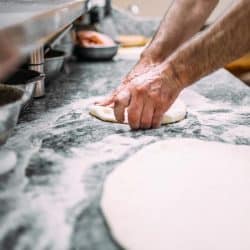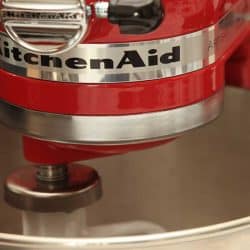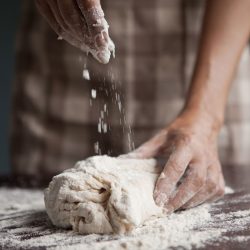Even though there are many different types of pasta, the ingredients, instructions, and do's and don'ts in dough preparation can make it tricky to determine what works best for your homemade dough. So, what can you do if the pasta dough is too dry? We've thoroughly reviewed each dough-making technique to get the best solutions for you.
If pasta dough is too dry, adding a small amount of water at a time to the dough will solve the problem of having dried dough. If the pasta has not formed a perfectly moist ball after adding a little water, then you can add a small amount of flour to the dough to help obtain your desired texture.
Is my pasta too dry? Am I over-kneading my pasta dough? How hard should my pasta dough be? How long should my dough rest? These are just a few puzzling questions many pasta lovers ask themselves when trying their hand at homemade pasta for the first or second time, maybe even the fifth or sixth time! Keep reading to learn the best techniques to solve all of these pasta inquiries. You'll find that after a few tries, preparing the dough will become effortless!

Pasta dough too dry - What to Do?
Understanding the different types of pasta with a simple recipe for each and much practice can ensure that your pasta will not turn out too dry. After making pasta a few times, it will become second nature to make that favorite dish.
There are many differentiated pasta types; angel hair, pappardelle, cavatappi, stuffed pasta, just to name a few. All of these choices can become confusing, but when it comes time actually to make the dough for each type of pasta, the recipe will normally call for the main two ingredients, flour and water.
Can you over-knead pasta dough?
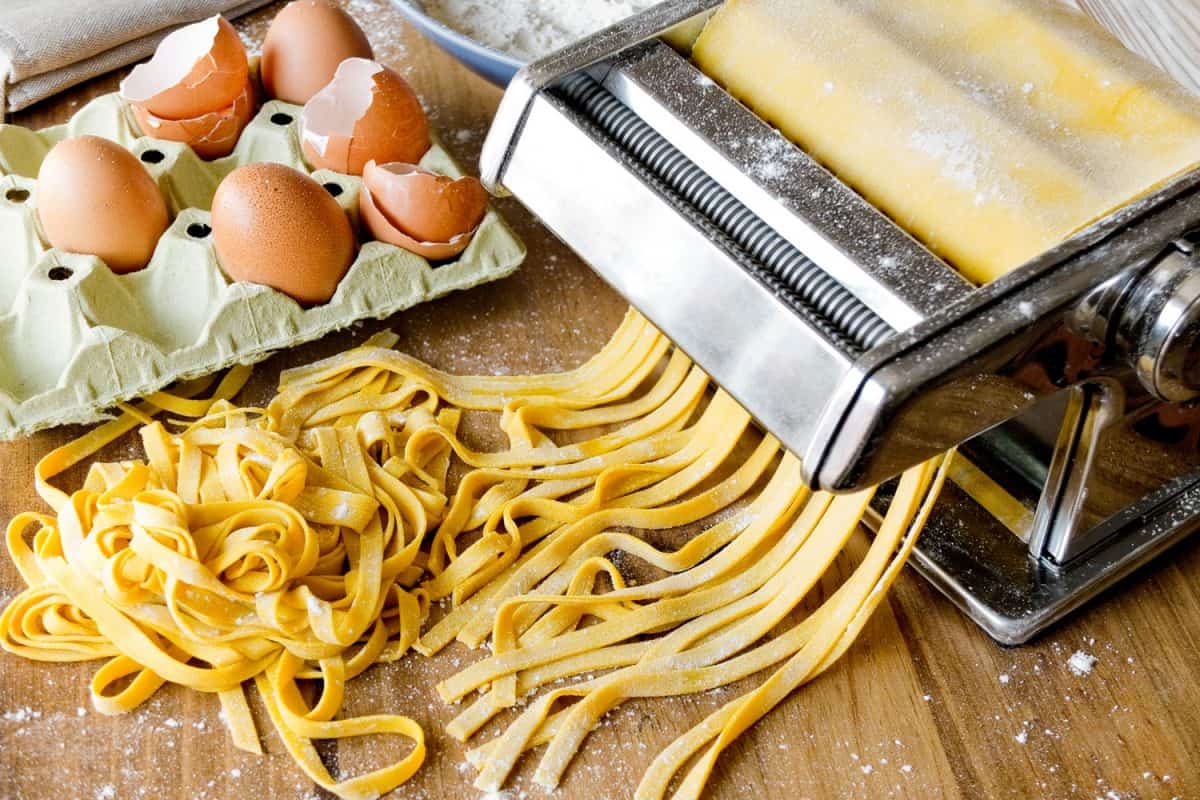
It is possible that you can over-knead pasta dough. Depending on the type of pasta that's desired, over-kneading pasta can cause it to have a tougher or stiffer outcome. Most instructions for pasta dough require a very short period of time to knead, somewhere around five minutes, depending on the type of pasta. Angel hair pasta kneading time is three to five minutes. However, pappardelle pasta kneading time calls for about ten minutes to knead. Therefore, it's very important to have a clear understanding of the type of pasta being made, or else the outcome can be greatly affected.
The purpose of kneading dough is to give the pasta structure. This structure is formed from proteins by combining eggs with the flour during the kneading process to form strands of gluten. Delicious Magazine puts it best when describing kneading from a scientific approach, explaining that the egg white and yolk ratio combined with the dough will give different results. When there is more egg white added, the dough will be more pliable. When more yolk is added, the pasta will be richer.
Depending on the type of pasta desired, over-worked pasta can bring about a finished result that may not be to the cook's desired taste. Cooks should also keep in mind that kneading pasta can be done with different types of equipment and not just by hand, therefore increasing the chances of the pasta being over-worked. you can also do it with a large spoon or mixer.
How hard should pasta dough be?
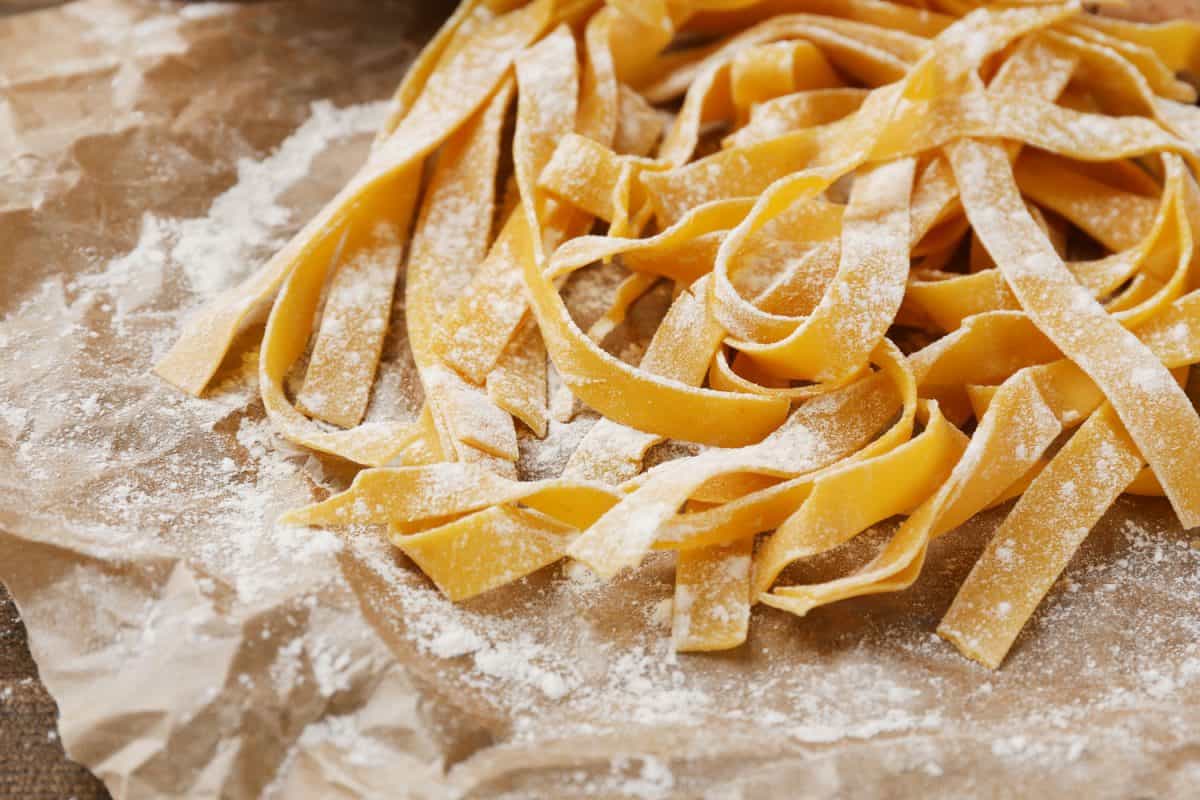
When preparing pasta, it should not be hard or stiff, but as Serious Eats states, the texture should be smooth, silky, elastic, moist, and workable. Some chefs have described the outcome of dough texture as being like modeling clay. The pasta should be able to form a perfectly moist ball. The dough is suppose to be stretchable, needless to say, hardened or tuff pasta dough cannot stretch. All pasta dough should have a texture that will allow one to work with the dough.
The instructions for one type of pasta dough may not be the same as the instructions for another type. The kneading times will be different, as well as some resting times, some ingredients such as eggs, salt, the use of water, milk or oil. These differentiations can determine the texture of the pasta as well, but regardless of the type of pasta being made, all dough should be pliable.
How long can you leave pasta dough to rest?
The different times that you can leave the pasta to rest may vary. Although recipes call for specific resting times, it is up to the cook to determine if the pasta has rested enough. This can be determined by checking the dough after 30 minutes or so to see if it feels like elastic or flexible. If it still does not meet the test, then more time for resting is needed.
The flour needs time to become completely hydrated, which helps with the forming of gluten. This formation helps the dough stretch easily. If the dough is springy when kneading and rolling it, the resting time might be about 20 minutes. However, some recipes state that the dough should rest for at least one hour, and others will indicate six hours if the pasta is made with yolks, as noted in the different Bon Appetit recipes.
Click here to see a pasta roller on Amazon.
The overall purpose is to allow the gluten to relax. The flour needs time to absorb the water from the egg whites, which makes the dough more elastic and easy to work with during preparation. Another alternative step is to wrap the dough in plastic wrap and refrigerate it for four hours before rolling. This step is another resting solution that will make the dough strong and pliable. Also, if the cook has a dough-making machine, they may find that resting the dough will not be necessary.
Conclusion
Remember that there are simple solutions to those common problems when making homemade pasta. If pasta dough is too dry, adding a small amount of water to the dough will solve the problem. It is also very possible that you can over-knead pasta dough. Depending on the type of pasta that's desired, over-kneading pasta can cause it to have a tougher or stiffer outcome.
Also, when preparing pasta, it should not be hard or stiff; the texture should be smooth, silky, elastic, moist, and workable. Finally, The different times that you can leave pasta to rest may vary. Although recipes call for specific resting times, it is up to the cook to determine if the pasta has rested enough. Just keep checking about 20 to 30 minutes to determine the pasta is flexible enough.
For more great pasta making tips, check out our related articles:
Do You Need A Pasta Drying Rack? [Here are some alternatives]
Dough Stuck In Pasta Machine – What To Do?


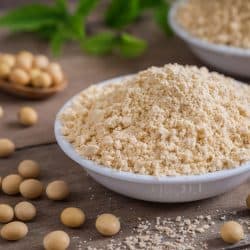
![Baker man hands breadmaking kneading bread dough, How Long To Knead Bread [By Hand And In A Mixer]](https://kitchenseer.com/wp-content/uploads/2021/03/Baker-man-hands-breadmaking-kneading-bread-dough-250x250.jpg)
